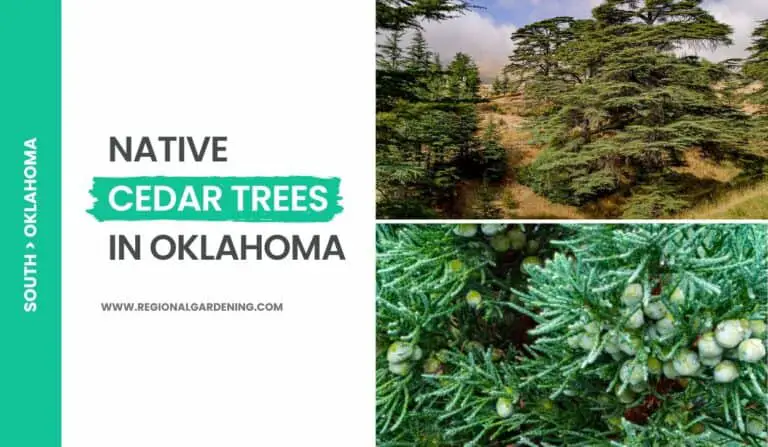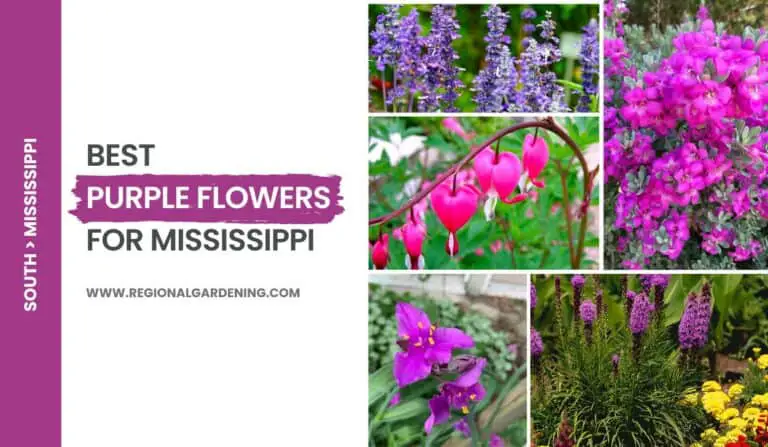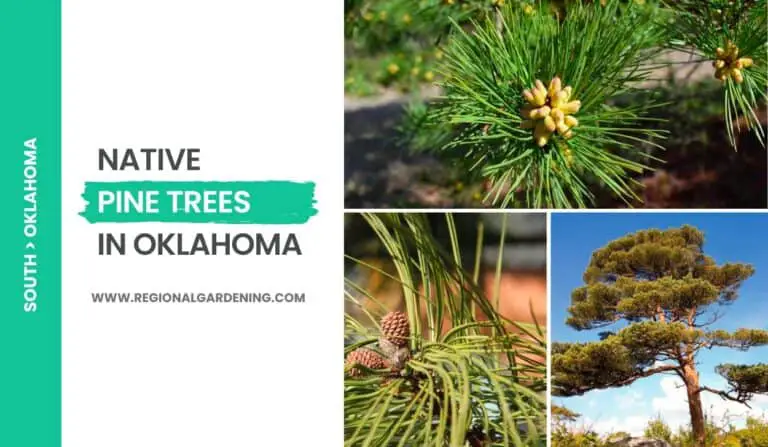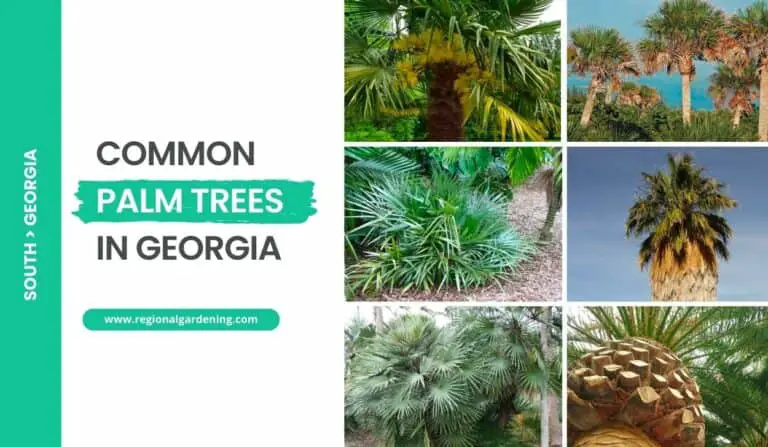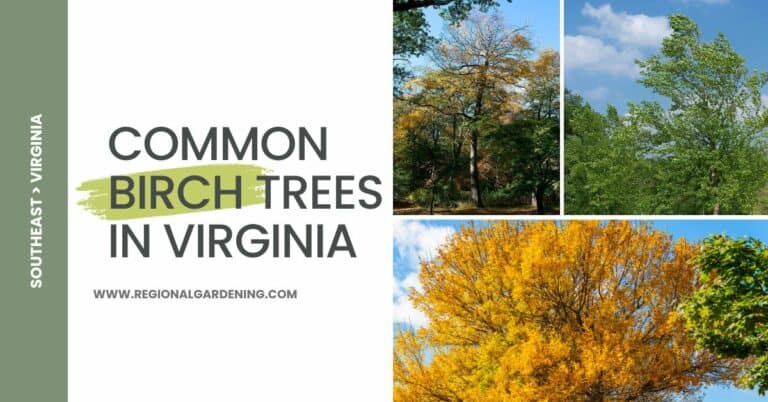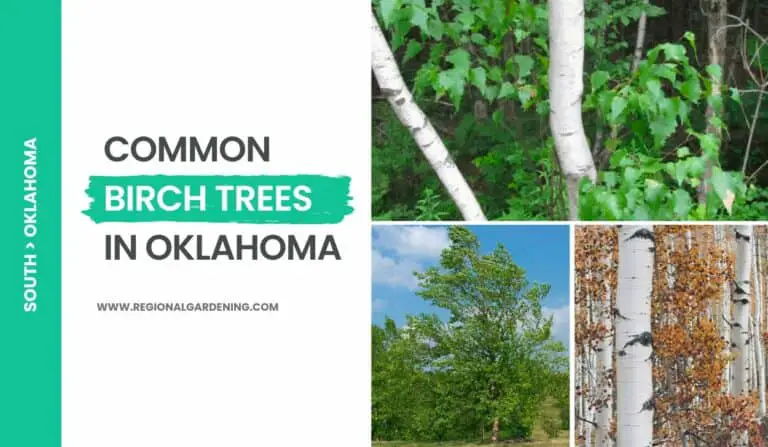4 Native Ash Trees In Oklahoma (Photos & Identification)
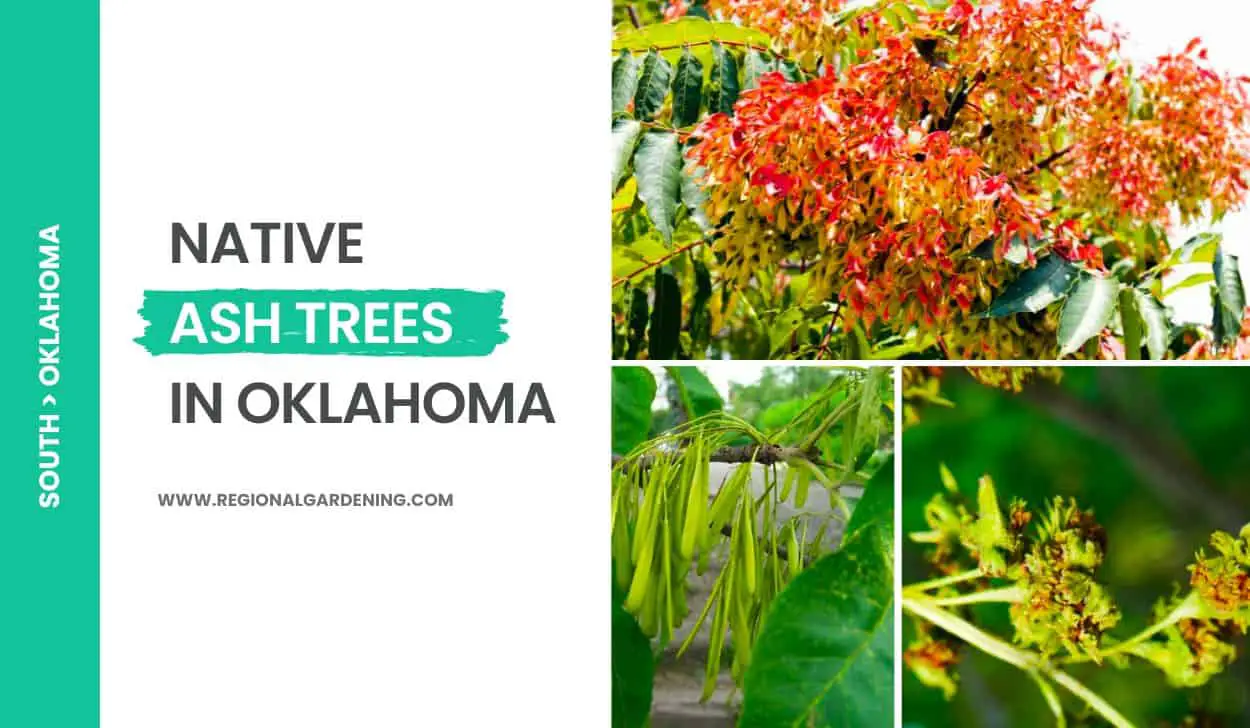
Did you know that the Emerald Ash Beetle infestation is causing a significant decline in the populations of ash trees in Oklahoma?
The Ash trees play a crucial role in Oklahoma’s ecosystem, providing shelter for wildlife and enhancing the state’s natural allure. These trees offer many practical benefits, including producing high-quality wood and providing refreshing shade.
This article will walk you through identifying the distinguishing characteristics of Oklahoma’s native Ash trees, which include white ash, green ash, red ash, and blue ash. By understanding these distinctions, you will be able to recognize and appreciate the Ash trees in your surroundings, as well as take advantage of the various benefits they provide.
So, let’s begin exploring ash trees in Oklahoma.
1. White Ash
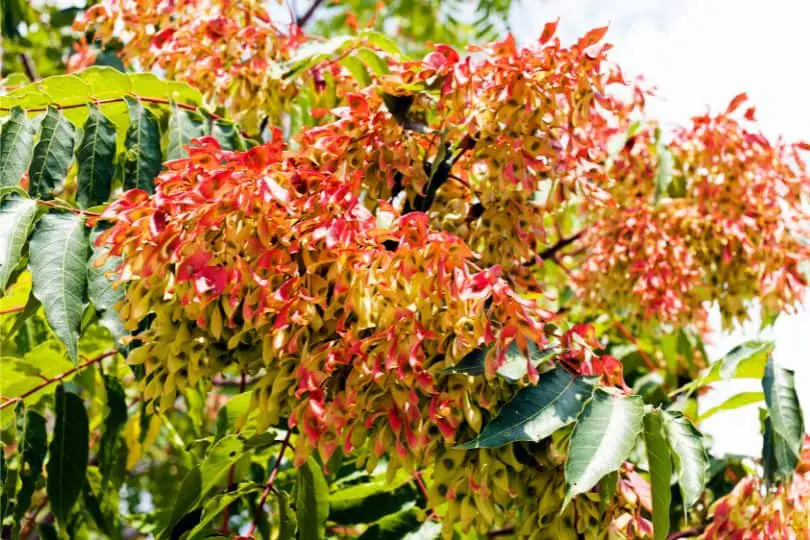
- Scientific Name: Fraxinus americana L.
- Common Name(s): White Ash
- Mature Height: 50-80 feet (15-24 meters)
- Native Region: Eastern United States
- Flowers: The white ash has two types of flowers on different trees. The male flowers are dense reddish-purple clusters, while the female flowers are more open bunches.
- Fruit: The fruit of the white ash is winged, resembling the blade of a canoe paddle. The wind disperses them after their late summer maturation.
- Uses: The wood of the white ash is highly valued for its toughness and elasticity. It is commonly used for small tool handles, athletic implements such as rackets, bats, and oars, as well as for furniture and interior finish.
The white ash, scientifically known as Fraxinus americana L., is one of the most common ash trees in Oklahoma. It is a deciduous tree native to eastern Oklahoma and found throughout the state.
It thrives in rich, moist soils, especially in highlands and river bottomlands. This tree matures to a height of 50 to 80 feet, making it a medium to large-sized tree.
The bark of the white ash is one of its distinguishing characteristics, ranging in color from light gray to dark brown. The bark is characterized by narrow ridges divided by deep, diamond-shaped fractures.
White ash leaves are complex, with 5 to 9 stalked, sharp-pointed leaflets. The upper surface of these leaflets is dark green and smooth, while the underside is pale green. The white ash’s opposing, compound leaves with more than 5 leaflets are a distinguishing feature that aids in identification.
The white ash contains two types of flowers on different trees that reproduce. Male flowers are grouped and reddish-purple, but female flowers are open and in bunches. The fruit of the white ash is winged and shaped like a canoe paddle. These fruits, which mature in the late summer, have a seed at one end. The wind successfully disperses them.
The wood of the white ash is highly regarded for its hardness and flexibility. It is the material of choice for small tool handles, athletic instruments such as rackets, bats, and oars, and agricultural implements. Furthermore, white ash wood is often used for furniture and interior finishes, demonstrating its versatility and durability.
When planted in rich, moist soils, white ash can thrive in Oklahoma settings. Because of its mature height, it is best suited for regions with plenty of space. Watering and fertilizing on a regular basis can assist promote healthy development. To maintain the ideal shape and remove any dead or diseased branches, pruning should be done during the dormant season.
2. Red Ash
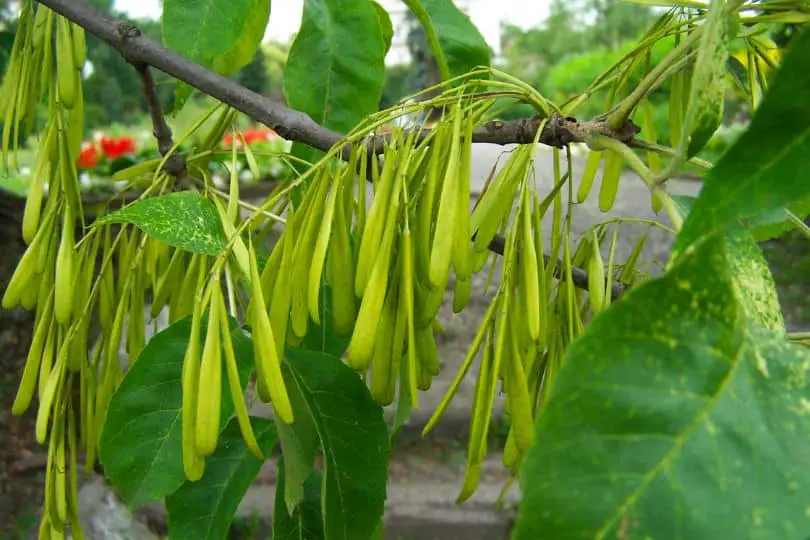
- Scientific Name: Fraxinus pennsylvanica Marsh.
- Common Name(s): Red Ash
- Mature Height: 30 to 60 feet (9 to 18 meters)
- Native Region: North America
- Flowers: Small, appear late in spring, male and female on separate trees
- Fruit: Samara, ripens in early autumn, hangs on tree in clusters
- Uses: Fuel wood, lumber, shade tree, erosion control
The red ash is a North American deciduous tree. It can be found in Oklahoma’s valleys and along stream banks as far west as Greer County. This tree can grow to be 30 to 60 feet tall when mature, with some examples reaching a diameter of 20 inches.
The bark of the red ash is thick and brown with a crimson hue, measuring 1/2 to 2/3 inch thick. It’s gently furrowed, with the ridges’ surfaces dividing into thin scales. The tree’s twigs are round and relatively sturdy, with whitish hairs that develop rusty brown over time. The twigs grow smooth and glossy as they age.
The red ash has opposite leaves with 7 to 9 short-stalked leaflets. When unfolded, the leaflets are normally whole below the middle and have a soft, hairy lower surface. They are slender and glossy, measuring 4 to 6 inches long and 1 to 1.5 inches wide. The leaves are delicate and smooth beneath and have a light yellow-green tint on the upper surface.
Small blooms appear on the red ash late in the spring, when the leaves begin to open. Male and female flowers bloom on different trees. The red ash’s fruit is a samara, which ripens in early October and hangs on the tree in clusters throughout the winter. The samara’s wing reaches just about one-third of the way down the seed.
The wood of red ash is dense, hard, brittle, and coarse-grained. It has a light brown tint with thick, lighter brown sapwood that is striped with yellow. Red ash wood, like that of other ash tree species, is highly valued for its use as fuel and lumber. Furthermore, red ash trees are often planted in Oklahoma landscapes as shade trees and to control erosion.
3. Green Ash
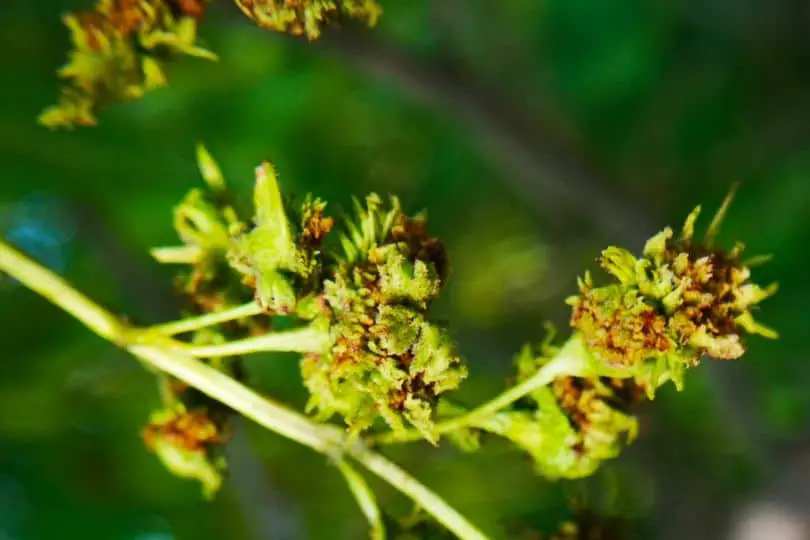
- Scientific Name: Fraxinus pennsylvanica var. lanceolata [Borkh.] Sarg.
- Common Name(s): Green Ash
- Mature Height: Up to 50 feet (15 meters)
- Native Region: Found throughout Oklahoma, as far west as Comanche County
- Flowers: Small, with male and female flowers occurring on different trees
- Fruit: Flat-winged samara, 1 to 2.5 inches long, with the wing extending well past the middle of the seed
- Uses: The wood is valuable and used for similar purposes as white ash.
Green Ash is technically not a different ash tree, instead, it is a variant of the above seen Red Ash. It is a common tree in Oklahoma settings. It can grow to be up to 50 feet (15 meters) tall when mature, with a trunk diameter of up to 2 feet. This tree grows best in lowlands and beside streams, but it has also been planted successfully in highland regions. Green Ash bark is similar to that of the closely related red ash, with smooth, spherical, and ashy gray twigs with pale lenticels and rusty brown bud scales.
Green Ash leaves are opposing and complex, measuring 10 to 12 inches long. They have 5 to 9 stalked, pointy, and slightly toothed leaflets. The smooth leaves have a vivid green or yellow-green tint on both sides. The Green Ash tree produces little flowers, with male and female flowers on separate trees.
The Green Ash fruit is a flat winged samara that measures 1 to 2.5 inches long and 1/4 to 1/3 inch wide. The wing extends much beyond the seed’s center and may be slightly square or notched at the outer end. Green Ash wood is heavy, hard, relatively robust, brittle, and coarse-grained. It is light brown in color and has a thick coating of light sapwood. While not as attractive as white ash, Green Ash wood is nevertheless valued and is used for similar purposes.
When planting Green Ash in Oklahoma settings, keep its native range and habitat in mind. This tree thrives in valleys and along streams because it prefers moist soil conditions. It may, however, adapt to mountainous soils. Green Ash grows best in full sun and requires little to no water once established. Pruning on a regular basis, especially when the tree is young, can aid in the development of a solid structure. Potential pests such as the emerald ash borer, which can cause substantial harm to ash trees, must be avoided.
Despite the fact that they are two different ash trees in Oklahoma, they are frequently confused and their names are used interchangeably.
4. Blue Ash
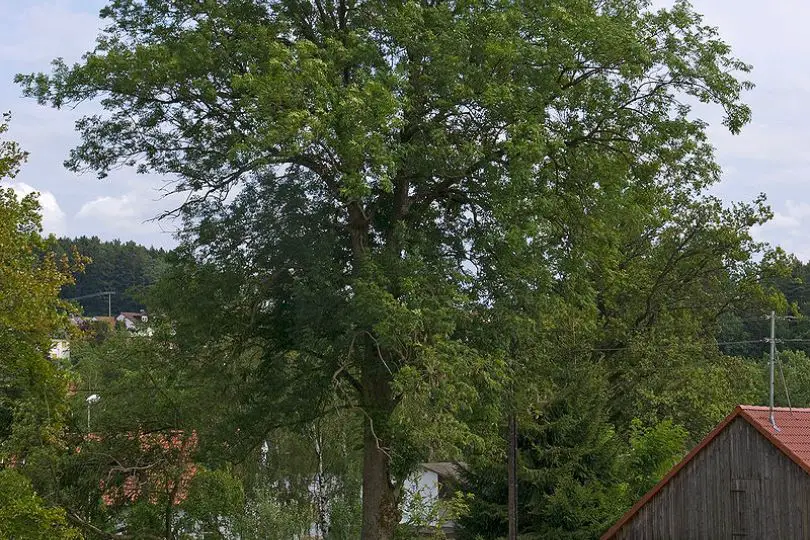
- Scientific Name: Fraxinus quadrangulata Michx.
- Common Name(s): Blue Ash
- Mature Height: 60 feet or more (18 meters or more)
- Native Region: Northeastern Oklahoma, limited to limestone bluffs and adjacent bottomlands.
- Flowers: No petals, appear in clusters when the buds begin to expand.
- Fruit: Flattened and oblong, 1 to 2 inches long and less than a half inch wide, usually notched at the outer end. The wing is about twice the length of the seed-bearing portion and extends down the sides past the middle.
- Uses: The wood is heavy, hard, and close-grained, used for flooring and wagon making.
The Blue Ash, scientifically known as Fraxinus quadrangulata Michx., is a big tree found in northeastern Oklahoma’s upland areas. It can reach mature heights of 60 feet or more and has a trunk diameter of around 2 feet. The Blue Ash’s main distinguishing feature is its young twigs, which are normally square-shaped and sometimes winged or 4-ridged between the leaf bases.
Blue Ash bark is light gray with red undertones and randomly split into big plate-like scales. A blue dye is produced by macerating the inner bark in water. Blue Ash leaves are opposite and complex, ranging 8 to 12 inches in length. They are made up of 7 to 11 stalked, long-pointed, coarsely serrated leaflets. The leaves are thick, solid, and smooth, with a yellowish-green outer surface and a paler tint beneath.
The Blue Ash produces clusters of flowers without petals during the flowering season. When the buds start to open, these blooms appear. Blue Ash fruit is flattened and rectangular, about 1 to 2 inches long and less than a half inch wide. It is typically notched on the outside, with a wing about twice the length of the seed-bearing part. This wing extends past the center and down the sides.
Blue Ash wood is highly prized for its weight, hardness, and close-grained character. It is pale yellow with brown streaks and has a broad zone of lighter sapwood. The wood is often used in flooring and wagon construction. Commercially, Blue Ash wood is not typically distinguishable from other ash kinds.
The Blue Ash is not abundant in Oklahoma landscapes, although it can be found in the upland areas of northeastern Oklahoma, mainly on limestone bluffs and occasionally dropping to neighboring bottomlands. It thrives in these rocky habitats. It is critical to have well-drained soil and adequate sunlight for Blue Ash in Oklahoma. Pruning and care may be required on a regular basis to keep the ideal form and health. Furthermore, safeguarding the tree from pests and diseases is critical to its survival.
Similar Articles
- Native Pine Trees In Oklahoma
- Native Maple Trees In Oklahoma
- Native Elm Trees In Oklahoma
- Common Palm Trees In Oklahoma
- Native Hickory Trees In Oklahoma
- Native Oak Trees In Oklahoma
- Native Cedar Trees In Oklahoma
- Common Cherry Trees In Oklahoma
- Common Birch Trees In Oklahoma
- Native Cypress Trees In Oklahoma
Native Ash Trees In Oklahoma – Sources
The Regional Gardening team makes sure that the information in our articles is accurate by only using sources that are known to be trustworthy. Some of these sources are peer-reviewed journals from government agencies, well-known universities, and scientific research organizations.
- Forest Tree Species, Oklahoma State University Extension
- Oklahoma Trees for Gardening Resource, Oklahoma State University Extension
- Oklahoma Native Trees by County, Oklahoma Forestry Services
- Native Plant Guide, Oklahoma County Conservation District
- Plants, Seeds & Landscapes, Oklahoma Native Plant Society
- Plant Selections for Oklahoma, Oklahoma State University Extension


